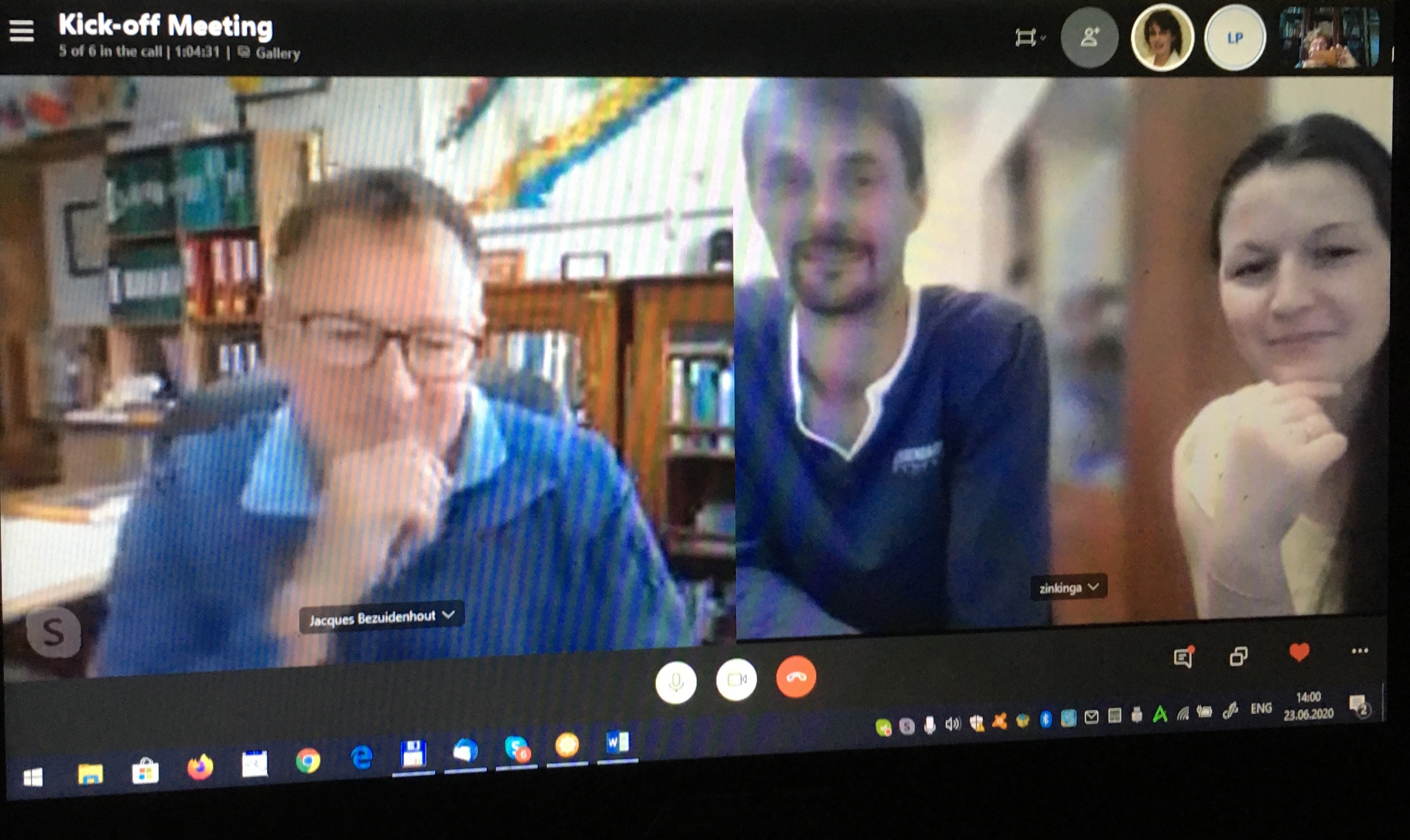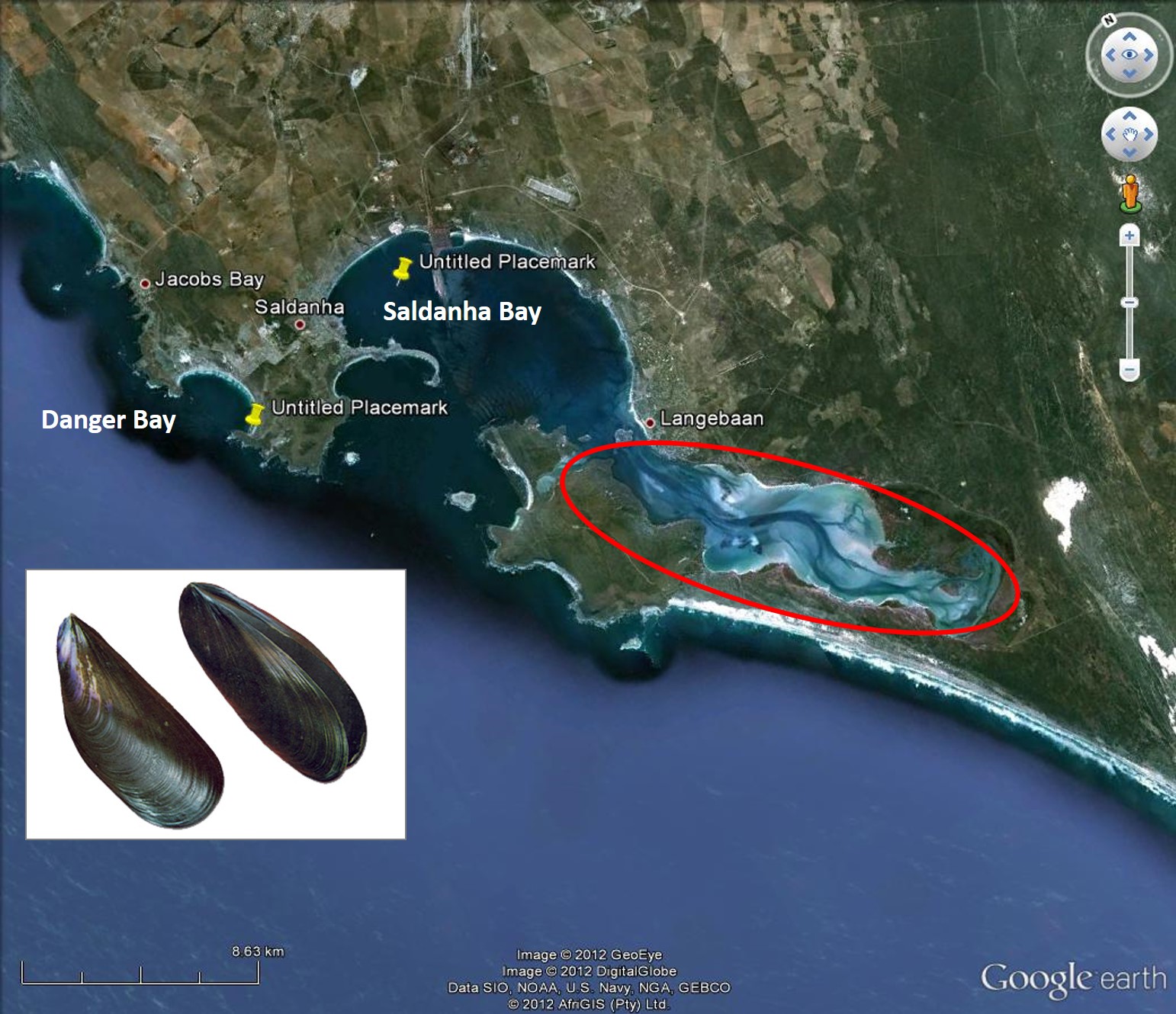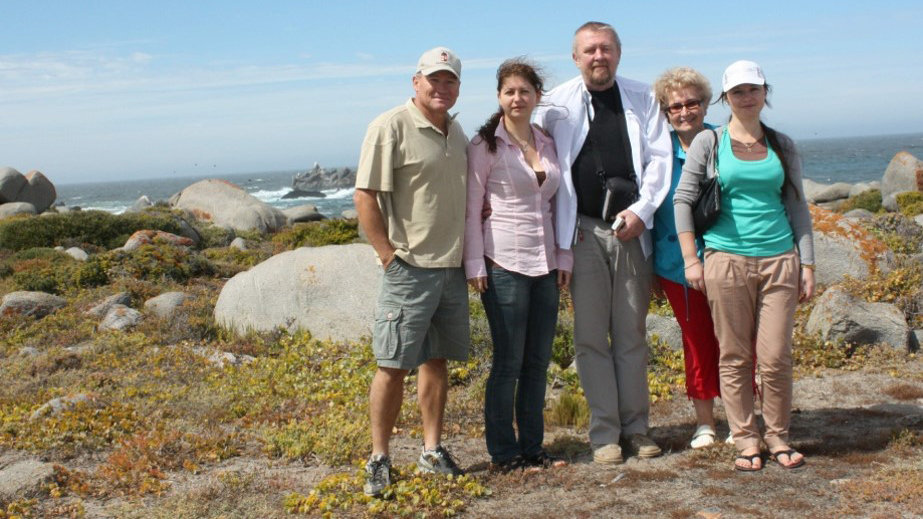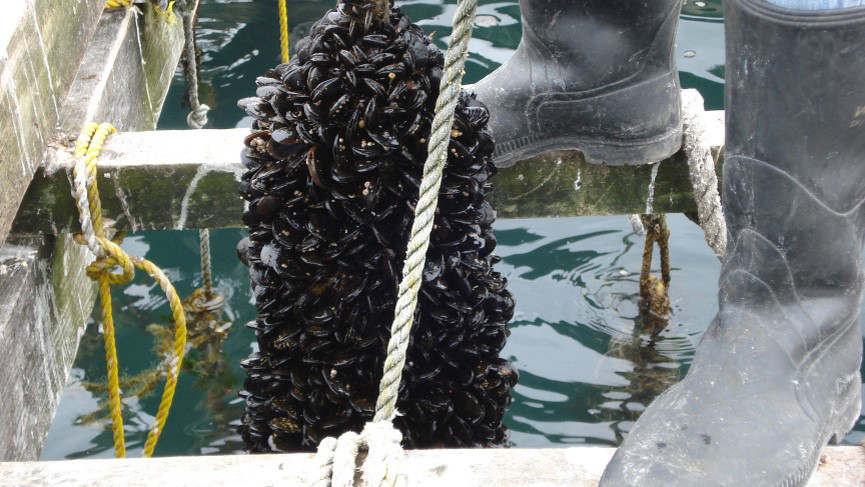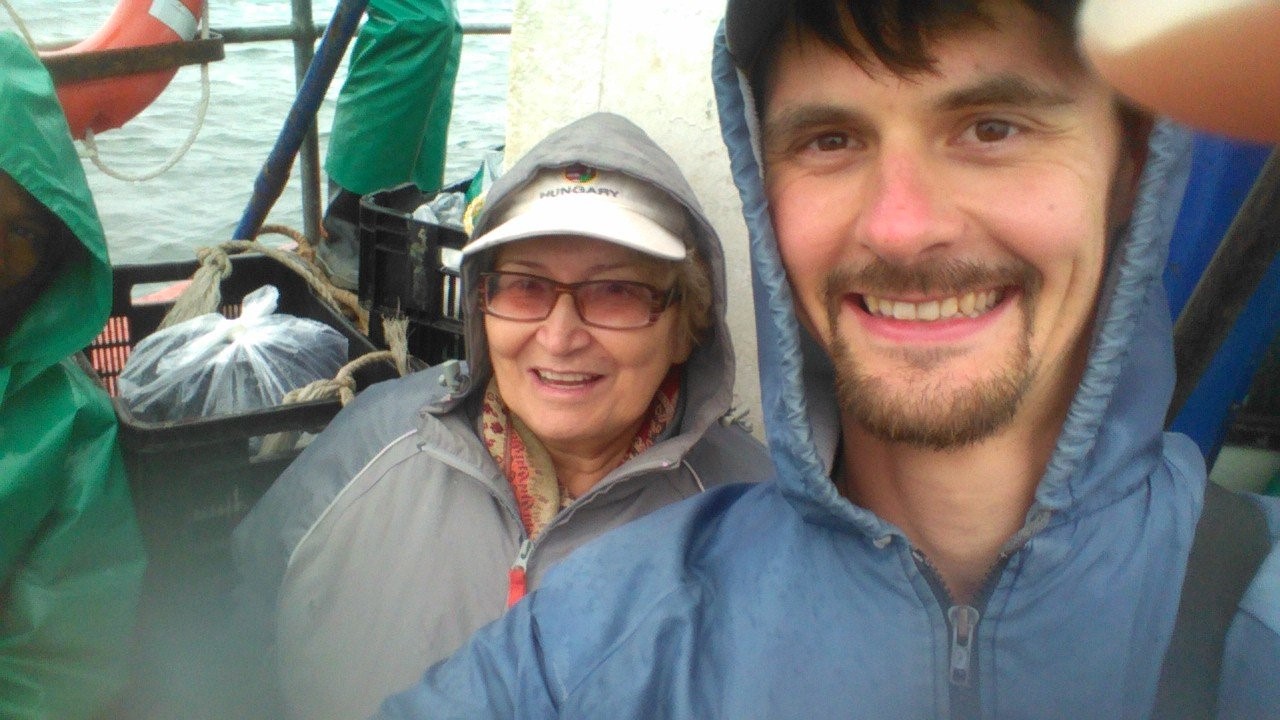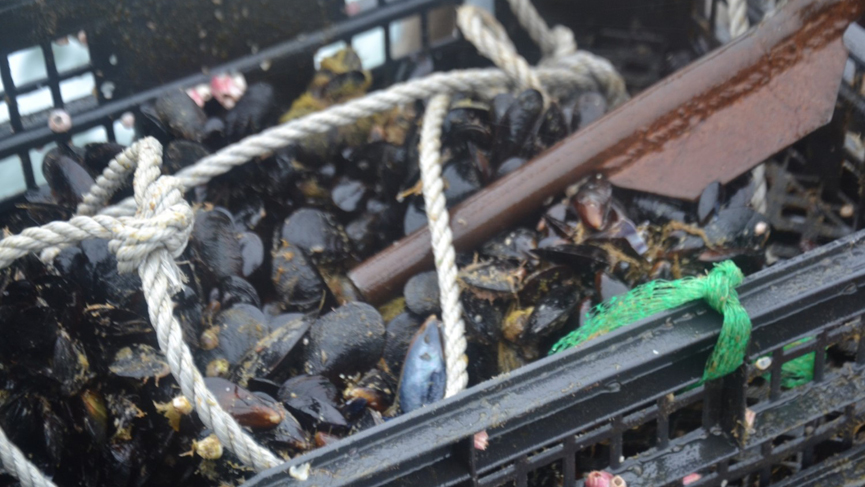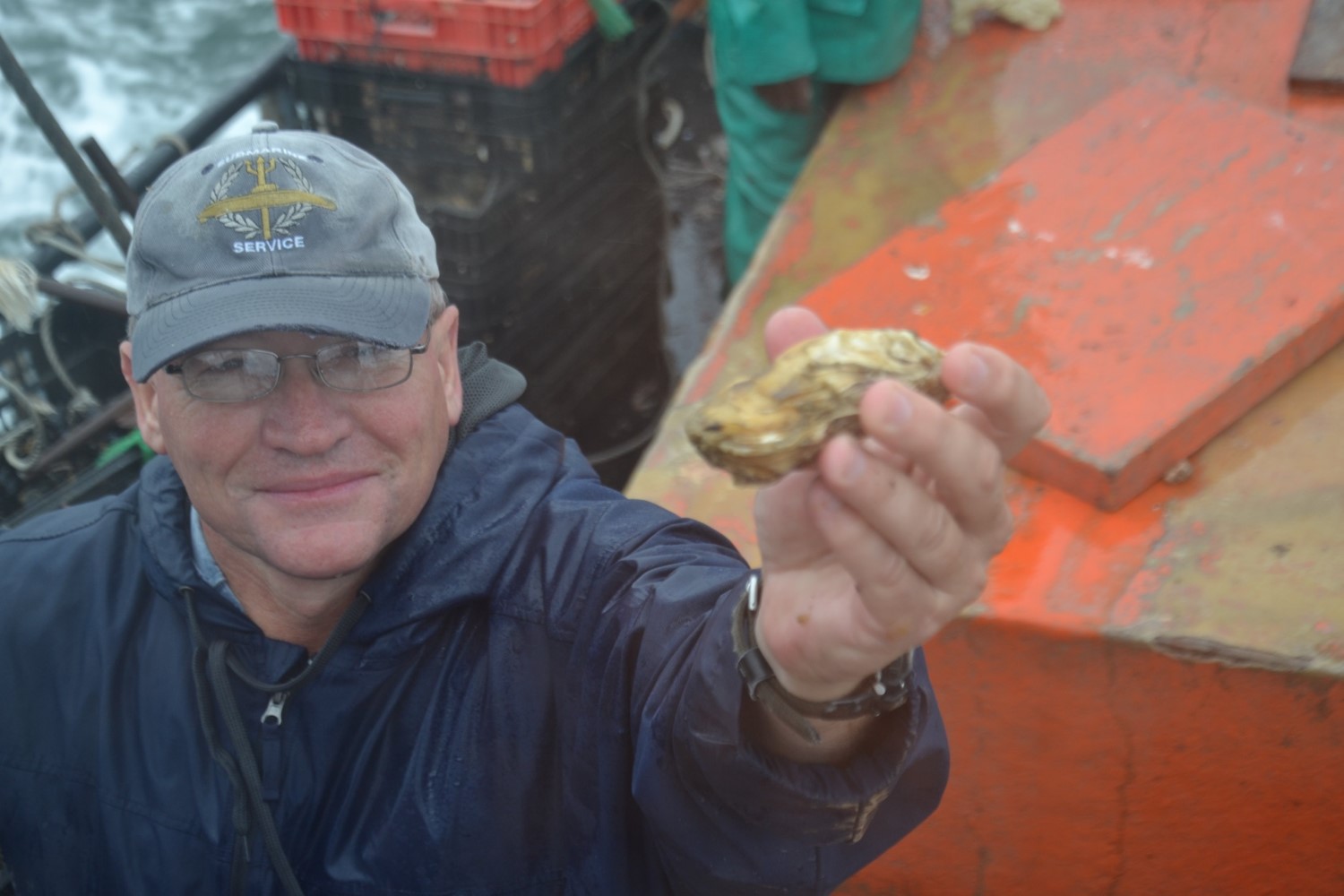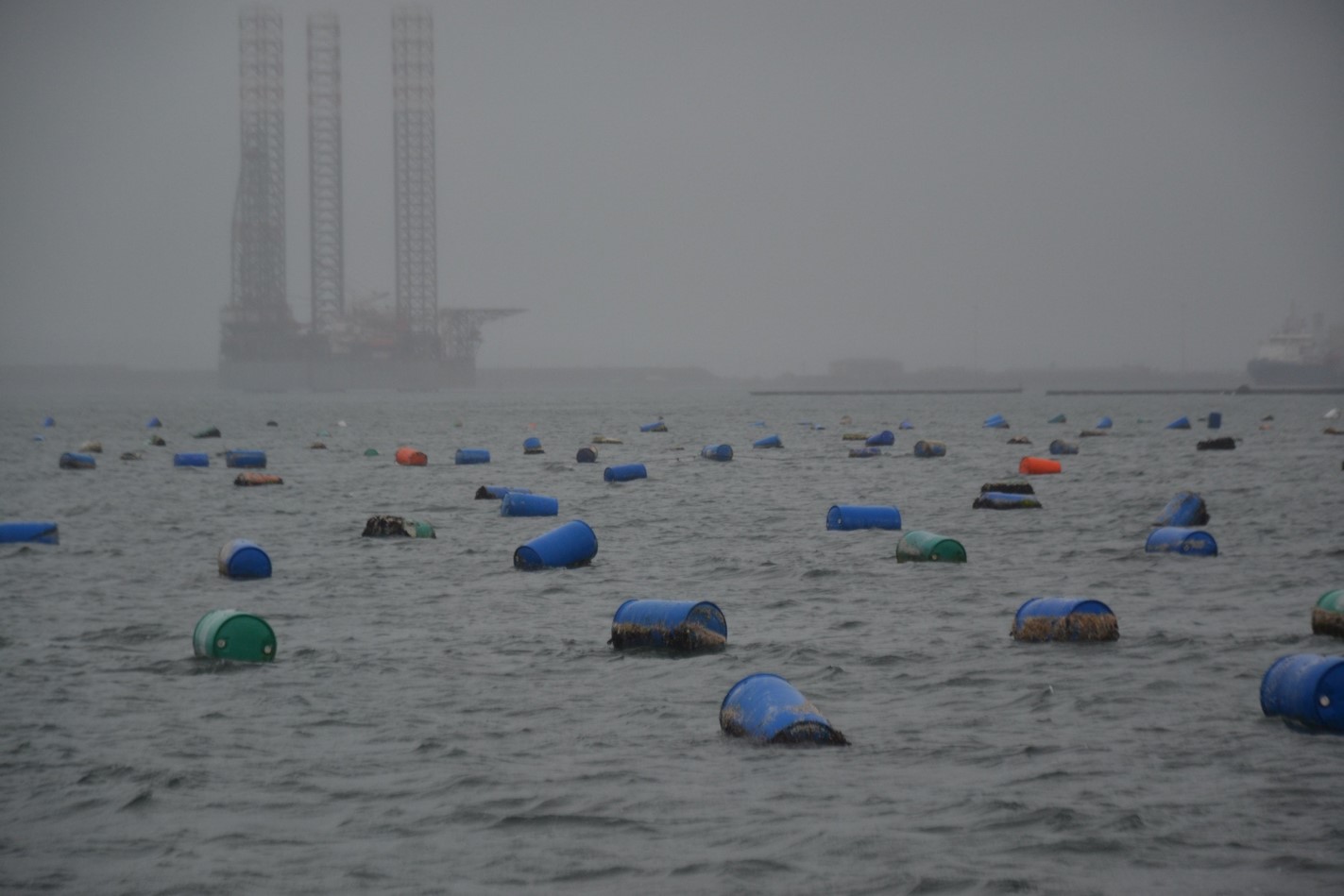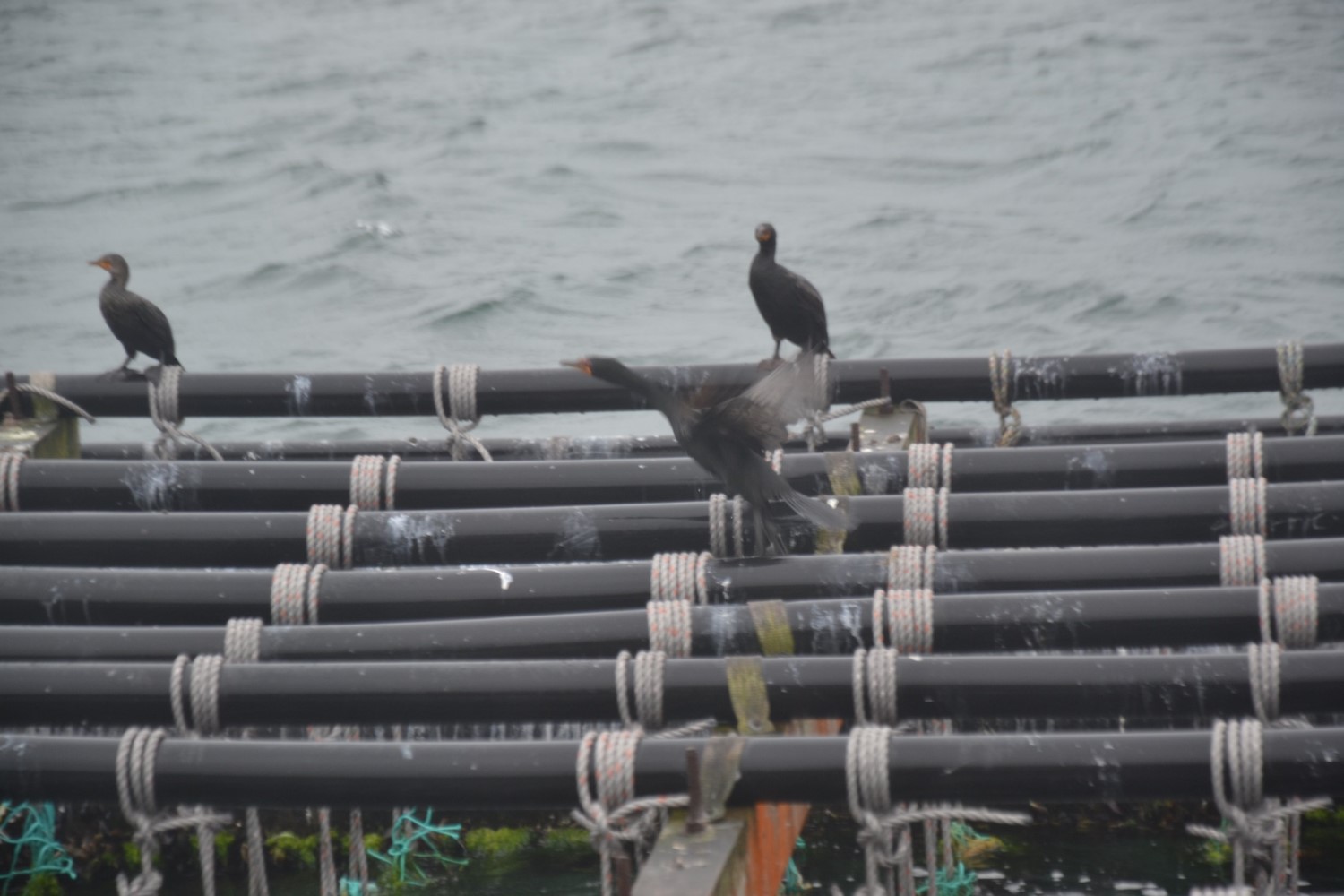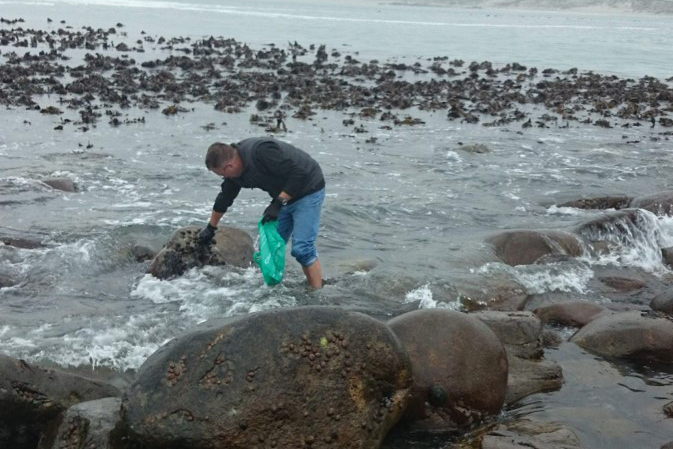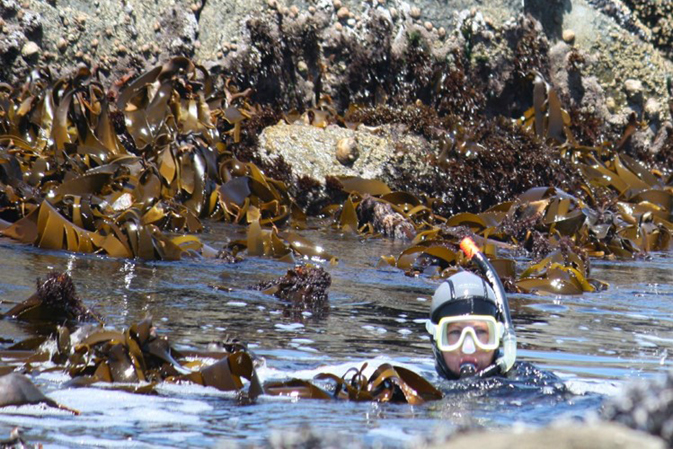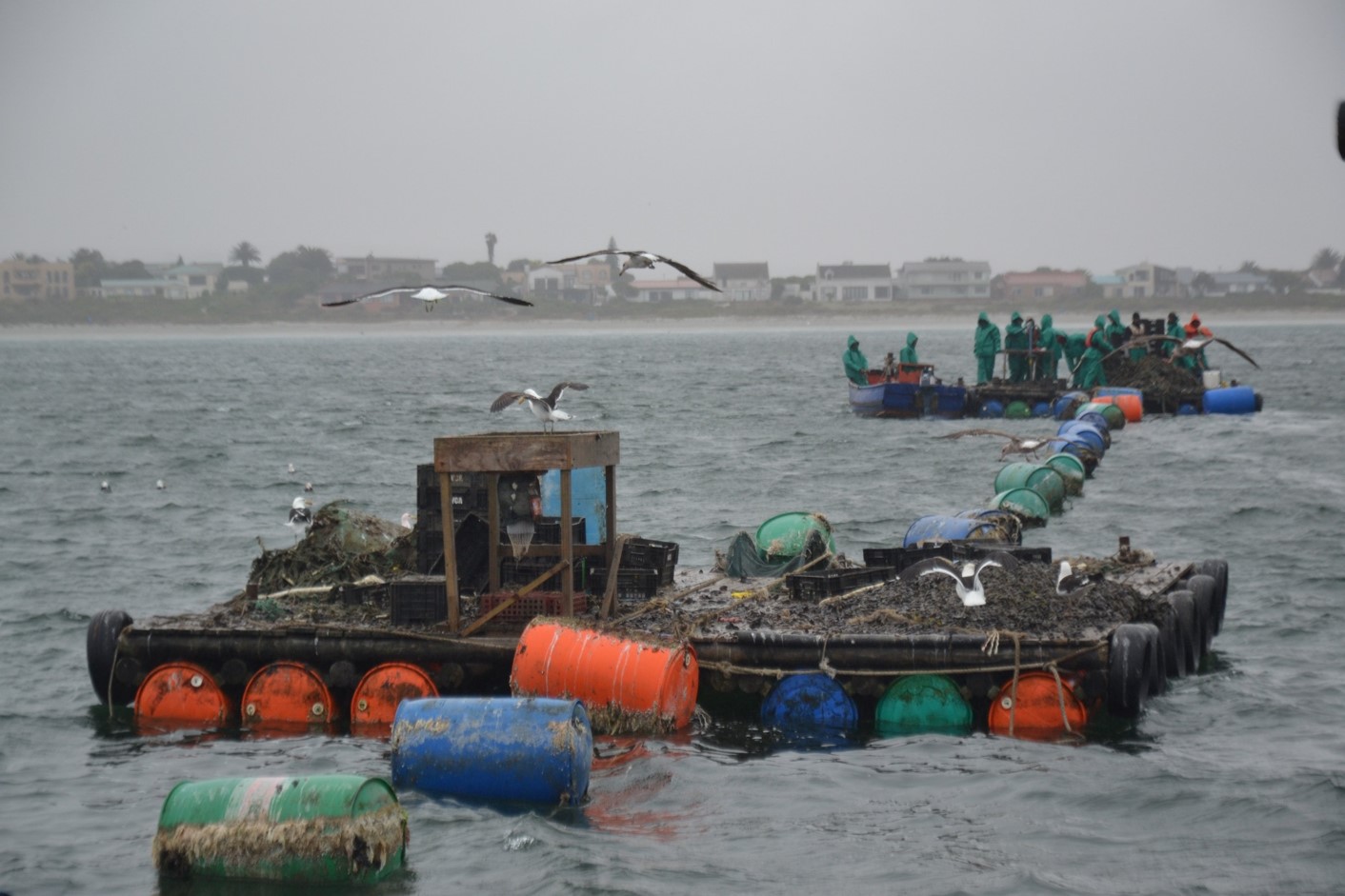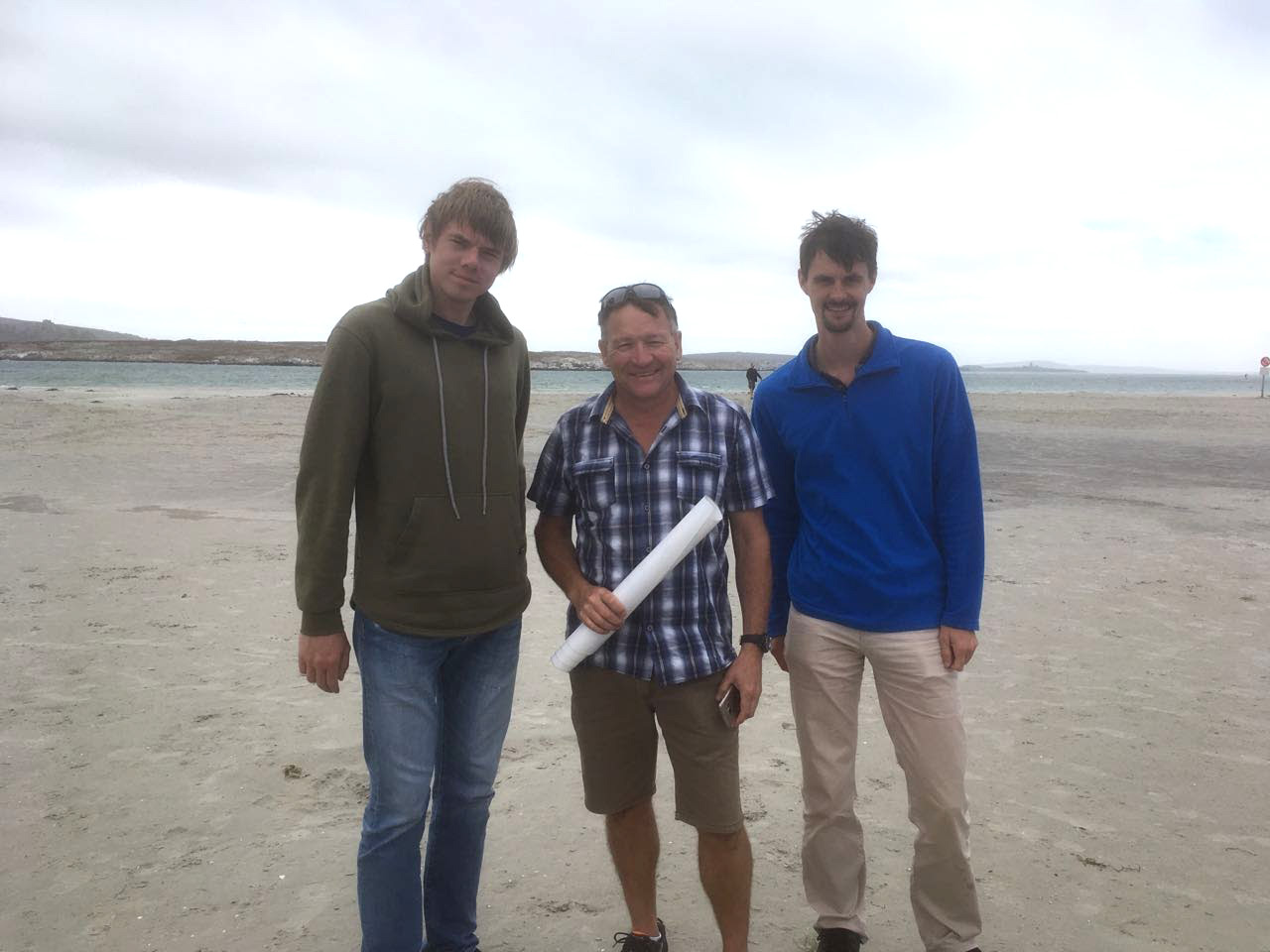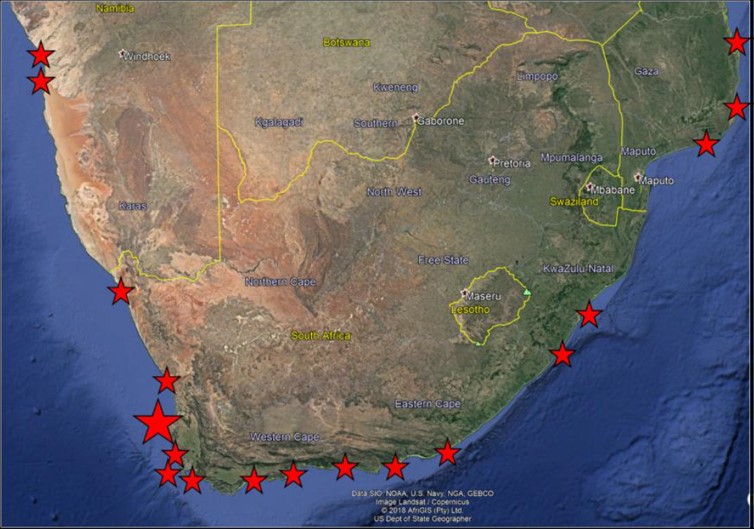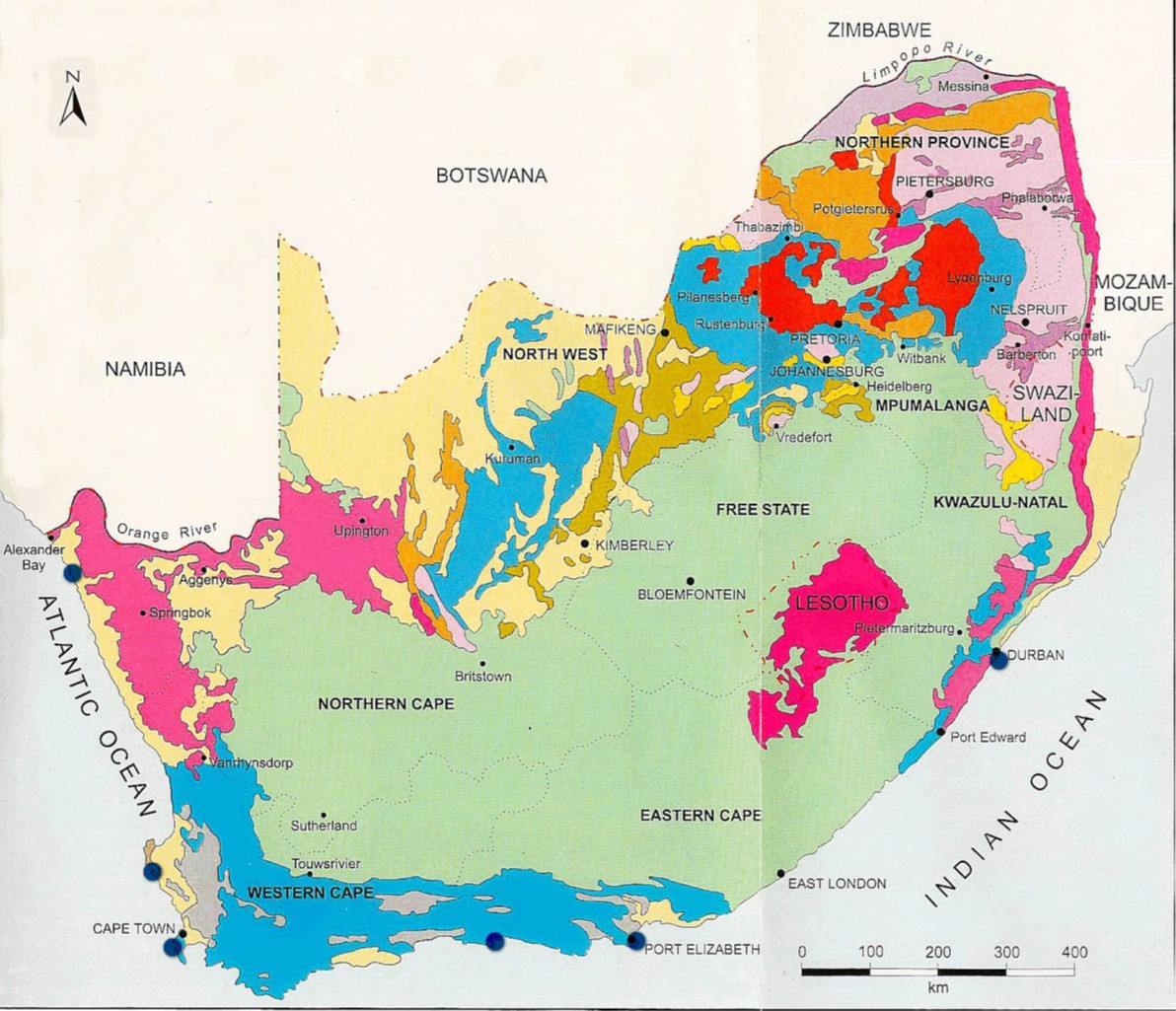FLNP studies in the service of ecology of South Africa
News, 06 July 2020
The first meeting of the JINR-South Africa joint environmental project “Mussel Watch”.
On 23 June 2020, for the successful implementation of the joint project of JINR-South Africa “Nuclear and related analytical techniques for environmental studies using aquatic biomonitors around the Southern African coastline” under unforeseen conditions of the coronavirus, the project leaders Jacques Bezuidenhout (University of Stellenbosch) from South Africa and Marina Frontasyeva (Frank Laboratory of Neutron Physics) from JINR, as well as the most active participants in the project – Inga Zinicovscaia, Head of the Sector of NAA and Applied Research of the FLNP, Sector researcher Pavel Nekhoroshkov and colleagues from the University of Western Cape of South Africa Leslie Petrik and Karen Cloete conducted Skype kick-off meeting, which discussed the organization and development possibilities of the project, taking into account the new difficult conditions.
The idea of using molluscs as biomonitors of aquatic ecosystems is a thing of the past when the SNAA&AR of FLNP for the first time irradiated freshwater molluscs at the IBR-2 reactor in the late 90s of the last century in order to protect the Rybinsk Reservoir, on the banks of which the largest in Europe Cherepovets Metallurgical Plant is located.
In 2012, an opportunity was presented to extend the experience gained in using freshwater molluscs to marine molluscs in the southern tip of Africa. During a trip to South Africa, connected with a completely different project, M. V. Frontasyeva accidentally met a professor of physics at the University of Stellenbosch, who was also … the owner of a company that grows oysters in the Saldan Bay of the Atlantic Ocean for local shops and restaurants. This was the future professor of the same University at Stellenbosch, Jacques Bezuidenhout. It was not difficult to interest Jacques in assessing the quality of his company’s products using multi-element neutron activation analysis in Dubna, Russia, with a guarantee of the scientific output of these studies in the form of publication of the results of the analysis in international journals.
Since 2012, from time to time, bivalve mussels from the “plantations” of Jacques Bezuidenhout and, for control, from the open waters of the Atlantic Ocean (Danger Bay) were brought to Dubna through two customs in a thermos with dry ice. The very first results inspired: there was a significant difference in the concentration of heavy metals depending on the sampling point. The results were published in the article “Differences in Trace Element Content between Non-Indigenous Farmed and Invasive Bivalve Mollusks of the South African Coast” in the international journal “Journal of Water Resource and Protection” (impact factor 1.24, DOI: 10.4236/ajac.2015.611084), which today has almost 2,800 views! Then, in 2016, the second article, “Trace Elements in Mediterranean Mussels Mytilus galloprovincialis from the South African West Coast” was published in the international journal “Ecological Chemistry and Engineering S” (impact factor 1.467, DOI: 10.1515 / eces-2015-0028). In the same year, the South African-JINR Forum was held at iThemba Labs. Four project participants from JINR participated in the presentation (M. V. Frontasyeva, Inga Zinicovscaia, Pavel Nekhoroshkov and Nikita Yushin). At the invitation of Jacques Bezuidenhout, project participants were given the opportunity to see with their own eyes how mussels (oysters) are grown on a farm directly in the ocean. On this day, a storm broke out, it was raining. But a trip by sea when it was pitching left a lasting impression on guests from Russia.
At the next Forum 2018 in West Somerset, South Africa, project managers from the Republic of South Africa and JINR presented the review report “Status of the “Mussel Watch” Project”. The report was highly appreciated and was noted by the leadership of South Africa as of particular interest in solving the environmental problems of South Africa, in particular, the aquatic ecosystem, since the preliminary results of this project showed that, as expected, the largest pollution of the aquatic ecosystem with heavy metals is observed in the port area of the city of Cape Town, which is a transit point from the Atlantic Ocean to the Indian one. This was a great incentive to continue work in the framework of the new project “Nuclear and related analytical techniques for environmental studies using aquatic biomonitors around the Southern African coastline”, which was accepted for funding for 2019-2021. It focuses on a large-scale assessment of the ecological situation of the aquatic ecosystem of the southern tip of Africa in Mozambique, South Africa and Namibia. In addition to the environmental aspect of this project, it also contains a fundamental component important for zoologists-malacologists studying molluscs to understand the mechanism of water filtration by these organisms. For this, the internal part of the molluscs will be dissected into separate organs, and their elemental analysis will be carried out both in South Africa, at the University of Western Cape and iThemba Labs, as well as in Dubna, at JINR. A recognition of the work of the SNAA&AR of FLNP in the environmental research in South Africa was also the fact that in 2018 M. V. Frontasyeva received the position of visiting professor (Adjunct Professor) of the University of Stellenbosch.
At the kick-off meeting via Skype, which, due to known reasons with coronavirus, could not be held before June 2020, Jacques Bezuidenhout assured the project participants of his readiness to conduct a routine sampling of molluscs-biomonitors of aquatic ecosystems on the coast of Mozambique, South Africa and Namibia. Inga Zinicovscaia confirmed that neutron activation analysis of the experimental material at the IBR-2 FLNP reactor will also be carried out on time. At the suggestion of Leslie Petrick (University of Western Cape), an interlaboratory comparison of different methods used in the analytical work will be carried out: INAA, ICP-MS, RFA, etc., using samples from the port area of Cape Town as an example. Thus, the project participants expect that the programme of studies of toxic metal pollution of the coastal waters of the southern tip of Africa within the framework of this project will be implemented. The discussion via Skype of the details of the project and forthcoming publications was very productive and had an atmosphere of lively conversation of the meeting participants. The momentum to the project is given!
M.V. Frontasyeva, Candidate of Physics and Math Sciences, Associate Professor,
Advisor Director on Applied Research and
Innovation of FLNP JINR
